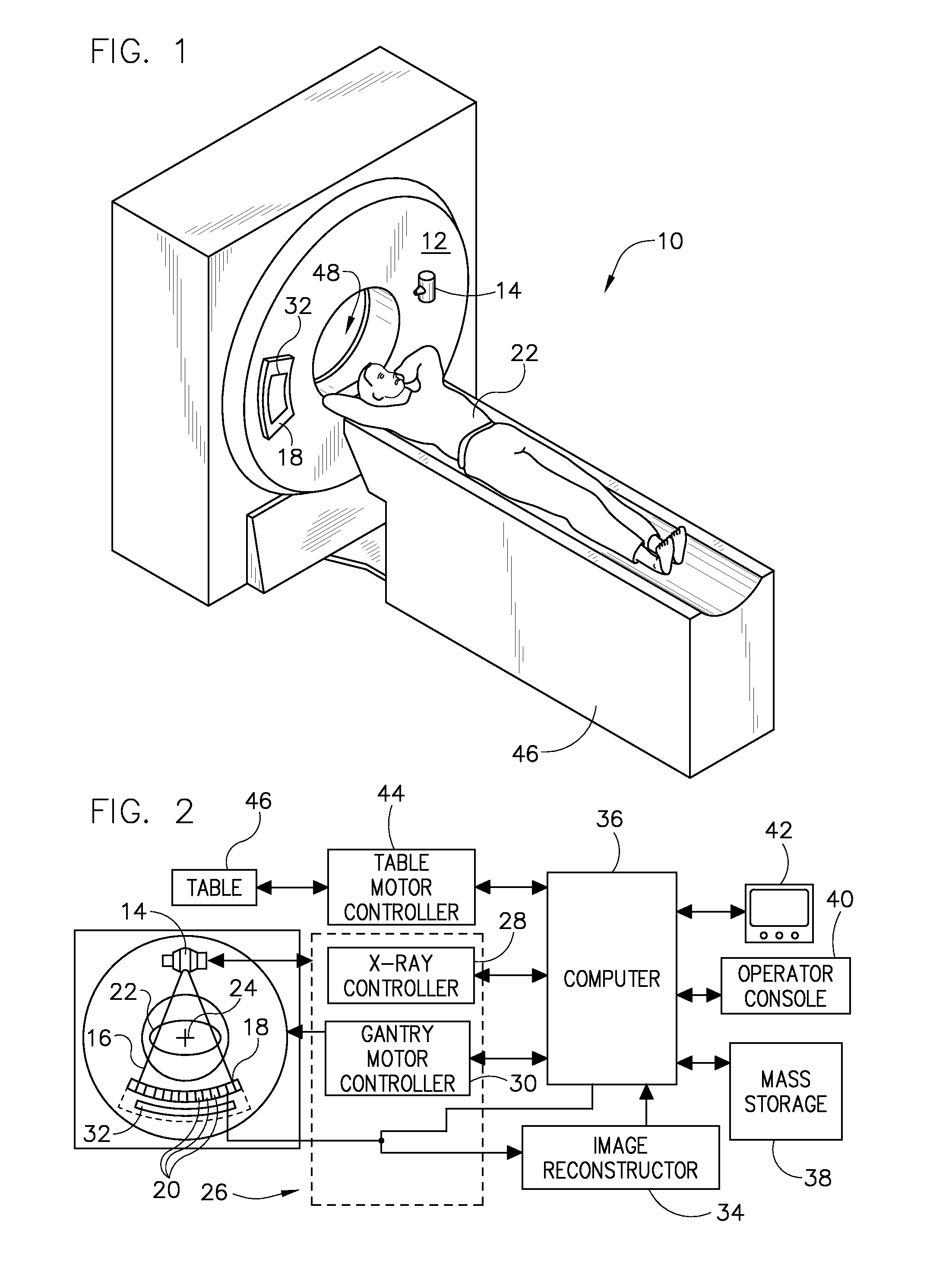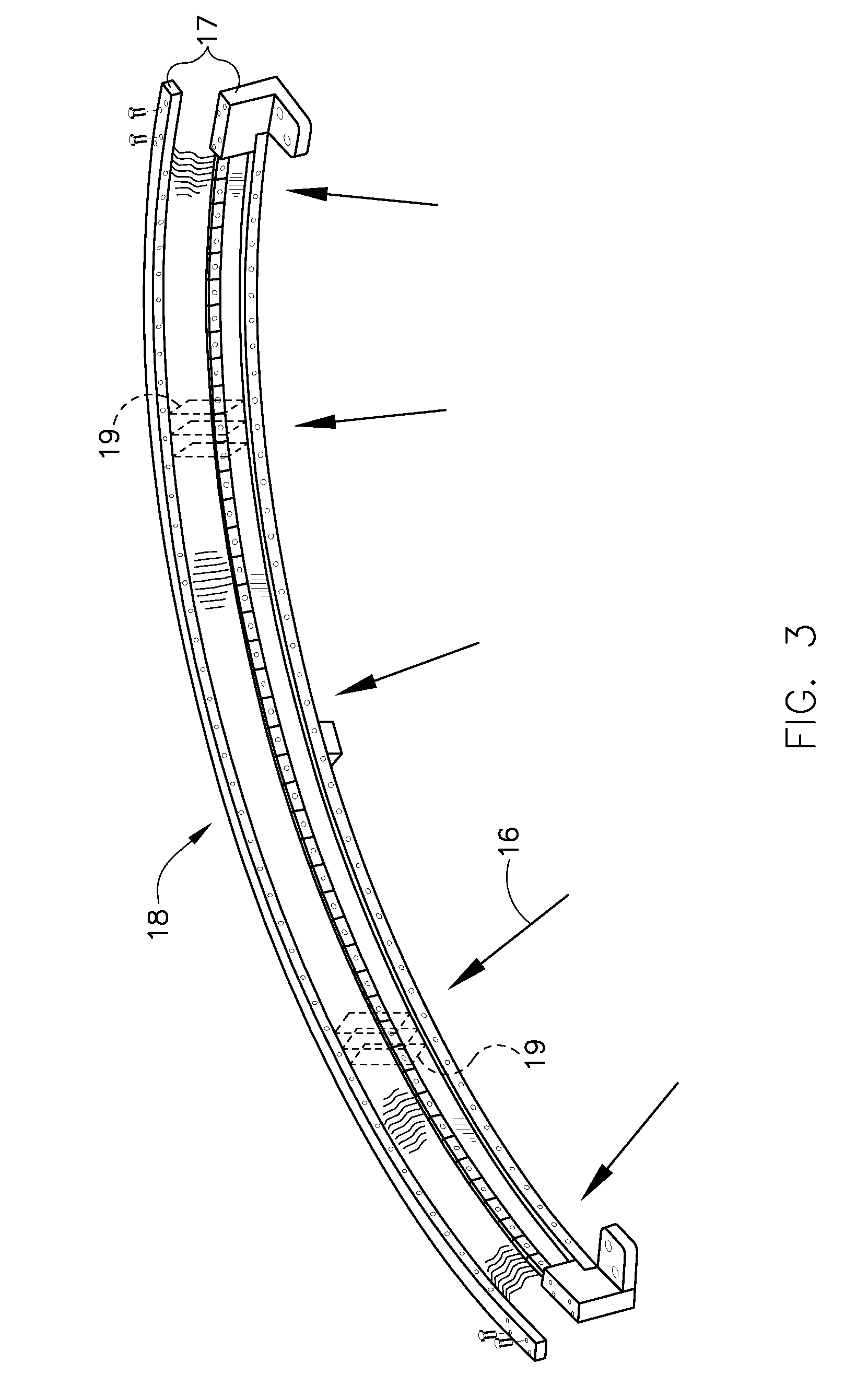Structure of a solid state photomultiplier
a photomultiplier and solid-state technology, applied in the field of imaging radiometers, can solve the problems of inability to provide data or feedback as to the number and/or energy of photons detected, inability to provide energy discriminatory data or otherwise count the number and/or energy of photons actually received by a given detector element or pixel, and inability of photodiodes to discriminate between the energy levels. , to achieve the effect of improving the optical crosstalk and dark count ra
- Summary
- Abstract
- Description
- Claims
- Application Information
AI Technical Summary
Benefits of technology
Problems solved by technology
Method used
Image
Examples
Embodiment Construction
[0024]The present invention is directed to radiographic detectors for imaging and, more particularly, to a solid-state photomultiplier (SSPM) structure with improved crosstalk and dark count rate characteristics. The SSPM can be integrated into any number of radiographic detection devices, including gamma spectrometers / isotope identifiers, neutron detectors, computed tomography systems, and positron emission tomography (PET) systems.
[0025]In accordance with one aspect of the present invention, a CT imaging system is provided. The CT imaging system includes a detector constructed to perform photon counting and energy discrimination of x-rays at the high flux rates generally associated with CT imaging. Referring to FIGS. 1 and 2, a computed tomography (CT) imaging system 10 is shown as including a gantry 12 representative of a “third generation” CT scanner. Gantry 12 has an x-ray source 14 that projects a beam of x-rays 16 toward a detector assembly 15 on the opposite side of the gant...
PUM
 Login to View More
Login to View More Abstract
Description
Claims
Application Information
 Login to View More
Login to View More - R&D
- Intellectual Property
- Life Sciences
- Materials
- Tech Scout
- Unparalleled Data Quality
- Higher Quality Content
- 60% Fewer Hallucinations
Browse by: Latest US Patents, China's latest patents, Technical Efficacy Thesaurus, Application Domain, Technology Topic, Popular Technical Reports.
© 2025 PatSnap. All rights reserved.Legal|Privacy policy|Modern Slavery Act Transparency Statement|Sitemap|About US| Contact US: help@patsnap.com



